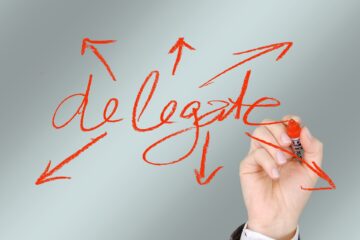![]()
Introduction:
In the early 20th century, the political gospel of laissez-faire was preached.[1] With the introduction of the Administrative law, the concept of laissez-faire came to an end. Laissez-faire economy is a theory that restricts government intervention in the economy. It states that when the government’s only function is to protect individuals’ rights then that is what makes the economy stronger.[2] Restricting of governmental functions allowed the private entities to surge the prices on their terms. While state being merely a police state, it couldn’t regulate the prices. The free economy didn’t work as smooth as it does sound. Therefore, to maintain a rule of law and provide convenience to the consumers, the government decided to have regulation and capping on the surge of prices in the economy. Thus, acting in furtherance of the concept of welfare state. “For better or worse, there was an existence of government. The ideal free market might work very well theoretically but that does not exist in real-world as companies become bigger to earn higher profits. Thus, the government had to step into to maintain consumer, producer and social interest”.[3] The primary efficiency debate remained between proponents of laissez‐faire and form of intervention. Democracy has always been a weak check at best. Political information and economic understanding are such public goods that gives the individual voters a little incentive to supply, giving the government the power to keep a subsidy on the goods while protecting the interests of the third party as well[4]. Hence, this article aims to figure out the question as to whether the laissez-faire economy and the welfare state can co-exist or they are mutually exclusive of each other.
Laissez Faire Economy
As mentioned before, a laissez-faire economy does not let the government interfere in the market mechanisms. It allows the demand and supply to control the prices.[5] The government is obliged to prevent any coercion against individuals such as theft, fraud, and monopolies that obstruct the rational market forces.[6] Laissez-faire policies need three components to work: Capitalism, the free market economy, and rational market theory.[7] The private entities have unlimited control over the market prices. The process of demand and supply tend to work in their favour. Their working policy is more of profit-oriented rather than consumer-oriented, that is only obvious. The competition rate is sky-high.
The theory of laissez-faire works on following principles-
- Minimum control of the government,
- Free enterprise,
- Not accounting law and order as subjects of the state, and
- All power concentrated on the individual.[8]
These principles not only seem unjustified but also put the government under a substantial existential crisis. Maintaining law and order is one of the prime objectives of the government. This is easy to state now as our constitution provides for the same in simple and clear provisions. But back in time, the British colonies were only concerned about accumulating wealth and be wary of anything that comes in between. Hence, the laissez-faire worked fairly for them. They built an economy where the wealth collection was supreme and everything else fell behind. The issue of finding solutions to the laissez-faire accompanied by the crisis of the welfare state wasn’t addressed in the ancient literature. Laissez-faire policies advocated a decrease in, and eventual elimination of, state intervention, including welfare spending, in the marketplace. Laissez-faire strategies often attempt to reduce the amount of consideration to the citizens. Sooner than later, it was realized that the laissez-faire solutions are not viable. Rather, they would lead to a decrease in the living standards of the people and to a legitimation crisis for the whole society. Simultaneously, it tends to generate certain abnormalities in relation to the accumulation process, as the laissez-faire strategies subvert the crucial role that the concerned consumers play in capitalist development.[9]
The Indispensable Transition
Laissez-faire is usually justified where the small suppliers play without significantly impacting the market in a competitive marketplace. There can be a duopoly. Thus, either one should encourage more such companies in the marketplace or else some form of government interference can be justified.[10] But the laissez-faire doctrine resulted in terrible failure. It was realized that every person wasn’t in a position to bargain at an equal level and uncontrolled freedom of contract that led to the exploitation of the weaker. As a result, the principal power got concentrated in the rich people and the balance of economy got so dreadfully shaken that it paved the way to a bigger catastrophe. It ultimately increased the economic disparity where the rich became richer and the poor became poorer accompanying slums, unhealthy and dangerous conditions of work, child labour, widespread poverty and exploitation of the masses. The country’s wealth got accumulated in a few hands. Thus, the Laissez-faire economy had a pitfall.[11]Therefore, with the enactment of the constitution and gaining of independence, came the concept of the welfare state. It came to the realization that the government shouldn’t solely rely on the judgement of the private enterprise while moulding its policies. The free market mechanisms could only be accepted in an atmosphere where the fluctuation of the prices is within a reasonable range, but that was possible theoretically.
Hence, a need was felt for intervention by the government, when the free market mechanisms started to affect the welfare system adversely. After the transition to a social welfare state, the role of the state shifted from regulating and maintaining administrative functions to the principles of natural justice and reasonableness. Though, the State may fall behind in ensuring the high set of standards that the private parties are able to provide and the expectations that the general public has from it but the social welfare state of government is still, however, most effective in a holistic and in a larger context. It ensures that, from the richest to the poorest, from the person with the highest literacy to the illiterate everyone gets a fair share of the resources and the rights that they have as citizens of the country. Though there are disparity and inequality in the way the state provides services this disparity does not lead to economic disparity, which may be the case in other forms like laissez-faire.[12]
Even the Supreme Court in a few cases cleared the fog regarding the welfare state. In the case of Samatha vs State of Andhra Pradesh[13] and Paschim Banga Khet Mazdoor Samity vs. State of West Bengal[14], Supreme Court held that “the Constitution envisages the establishment of a welfare state at the federal as well as the State level. In a welfare state, the primary duty of the government to secure the welfare of the people.”[15] But laissez-faire cannot be exorcised from history simply by showing that the law was so used in the past. To say no more than that begs the decisive question: whether the law was used in ways which clashed with the particular proscriptions of the laissez-faire doctrine. From the fall of the laissez-faire standard, a solemn lesson about the cost of clinging too long, and insisting too strenuously, to the tenets of a standard which has ceased to comport with reality was learnt. So, the laissez-faire standard fell as it ceased to reflect reality i.e. to restrain the expectations of men and the welfare state standard came into being as it was based on reality so it could not be ignored for long.[16] The maximizing of pleasure and the minimizing of pain led to an artificially contrived and immediate identification of interests—a direct negation of the old principle of Laissez-faire.[17] The abandonment of the necessary corollary of Laissez-faire could only furnish one item in a programme of reform that the even in the natural harmony of interests the free market economy had thin places even in the economic sphere.[18]
The Co-Existential Phenomenon
Though Laissez-faire and State welfare interventionist views can’t both be described as welfare-state liberalism, they are manifestly different doctrines. But their agreement seems to be profound. Both understand that the government and the economy as instruments for the advancement of human welfare, and both make confident claims about what does and does not advance human welfare. For both, the primary justification of political institutions and government policies is that they effectively promote human welfare. The ideology behind welfare state is to promote human welfare and find ways in which the government could do a better job whereas the free-market welfarists insist that the market does a superior job of promoting human welfare and tell us why the government does badly at promoting welfare.[19] Thus, a proper balance can be stroked between the two- where the government doesn’t interfere in the regulating market economy till the prices surge at an uncontrollable rate and the private entities be more acceptable of the governmental control and abide by the rule of law. Free trade allows the individuals to be freer and more converse about their surrounding environment but a society without any law and order is bound to fall apart. Therefore, the co-existence of the two is possible but with its inherent conditions. Although the two often disagree deeply about the existence of certain facts, they both concur about the aim of the government and the justification of coercive interventions, in a complex social world in which the facts of the matter are so murky, it can be a bit difficult to distinguish the two.[20]
References:
[1] Satyan, Kanika, “Social Welfarism in India”, July 2, 2015, (SSRN: https://ssrn.com/abstract=2625930)
[2] Amadeo, Kimberly, “Laissez-Faire Economic Theory- Laissez-faire Economics Depends on Three Components”, May 14, 2020 (https://www.thebalance.com/laissez-faire-definition-4159781)
[3] http://dnai.in/dmeU
[4] Caplan, Bryan, “LAISSEZ‐FAIRE POLICY, August 15, 2008 (https://www.libertarianism.org/topics/laissez-faire-policy)
[5] Ibid note 3
[6] Ibid note 2
[7] Corporate Finance Institute- “Laissez-faire”, (https://corporatefinanceinstitute.com/resources/knowledge/economics/laissez-faire)
[8] Ibid note 1
[9] BONANNO, ALLESANDRO, et al. “Laissez-Faire Strategies and the Crisis of the Welfare State: A Comparative Analysis of the Status of the Elderly in Italy and in the United States.” Sociological Focus, vol. 21, no. 3, 1988, pp. 245–263. JSTOR (www.jstor.org/stable/20831480)
[10] Supra note 3
[11] Supra note 1
[12] Ibid.
[13] AIR 1997 SC 3297
[14] (1996) AIR SC 2426
[15] Ibid.
[16] Woodard, Calvin, “REALITY AND SOCIAL REFORM: THE TRANSITION FROM LAISSEZ-FAIRE TO THE WELFARE STATE”, December 1962, Vol. 72, Issue 2, the Yale Law Journal.
[17] Kemeys Tynte, G., “The Doctrine of Laissez-Faire: II. Bentham and the Reform Epoch”, 1910, the Sociological Review, Vol. A3, Issue 4.
[18] Ibid.
[19] Gaus, G., “Why all Welfare States (Including Laissez-Faire Ones) Are Unreasonable”, 1998, Social Philosophy and Policy, Vol. 15, issue 2.
[20] Ibid.



6 Comments
Manoj · 03/08/2020 at 11:41 AM
Very nice article
Good work
Keep it up
Kanak singh · 03/08/2020 at 1:55 PM
Well written. Insightful.
Abhinav Singh · 03/08/2020 at 6:29 PM
Country like ours (India) are in the most urgent need to strike the balance between these two phenomena. As we have to balance out the welfare measure given to millions of underprivileged with good market growth (production).
Nicely put forward. 🙌🏼🙌🏼
Pradhumn · 03/08/2020 at 6:30 PM
Good keep it up😋😋
SR · 03/08/2020 at 10:23 PM
Keep up the Good work
Nikhil · 03/08/2020 at 10:44 PM
Insightful.!